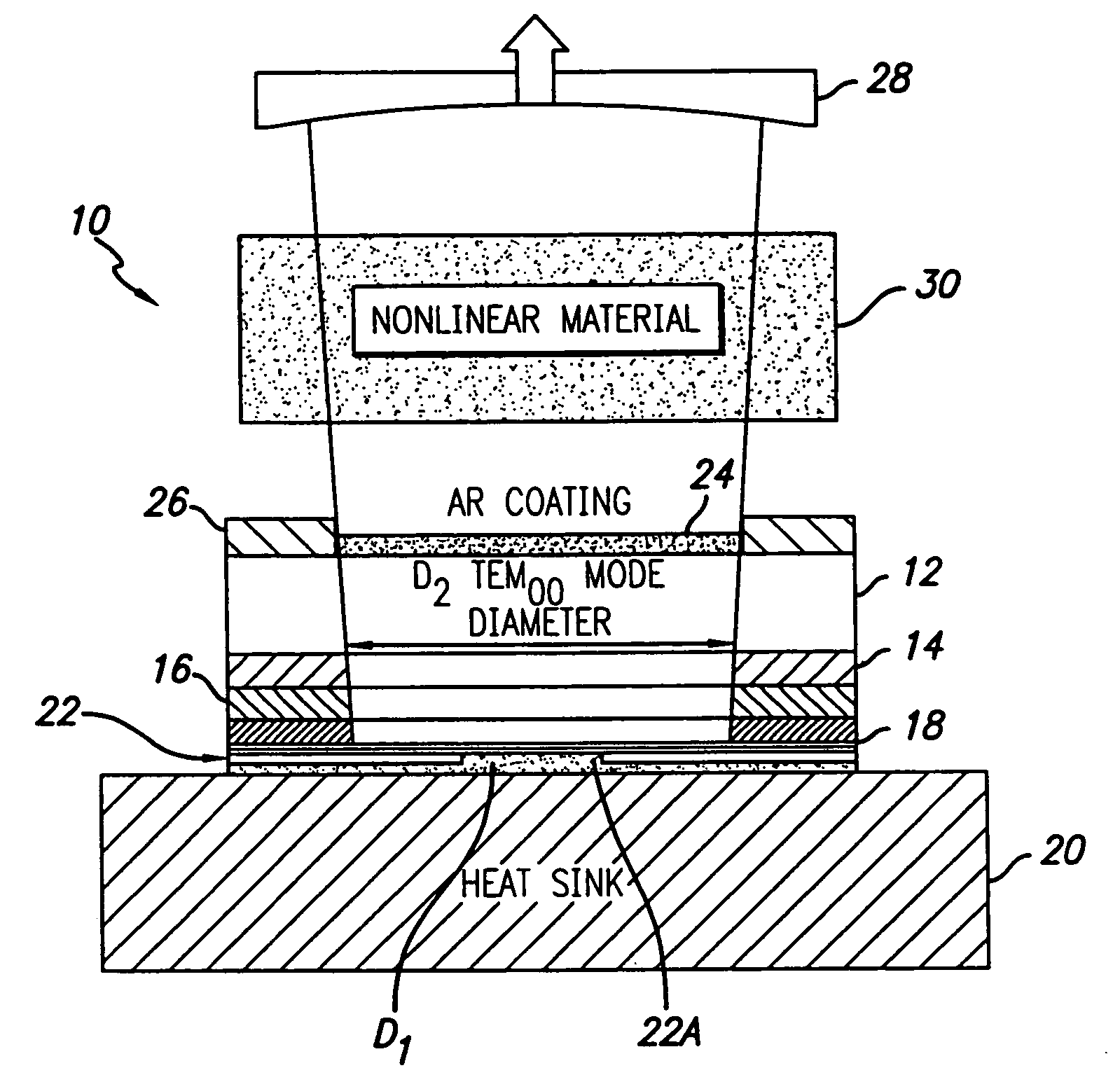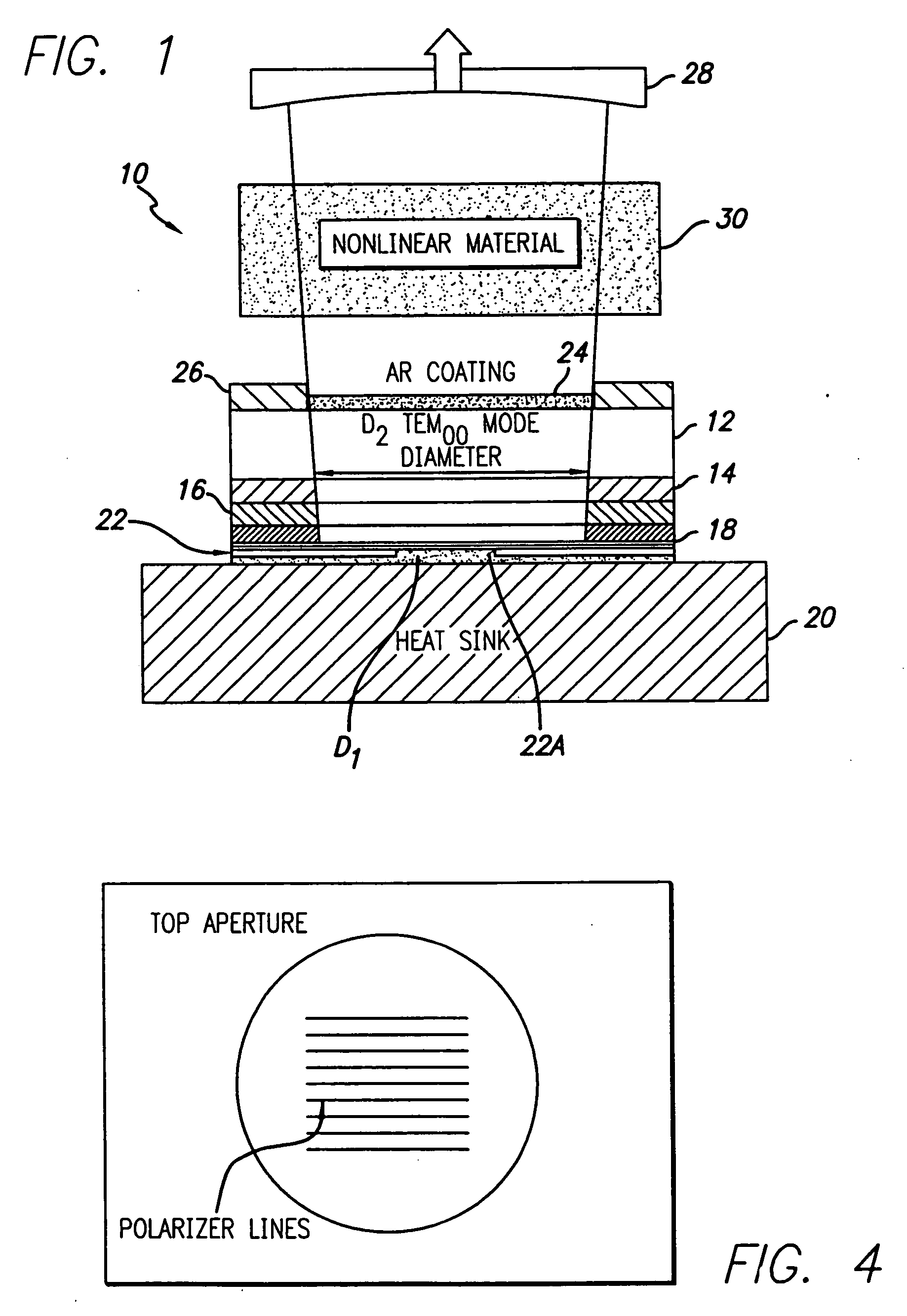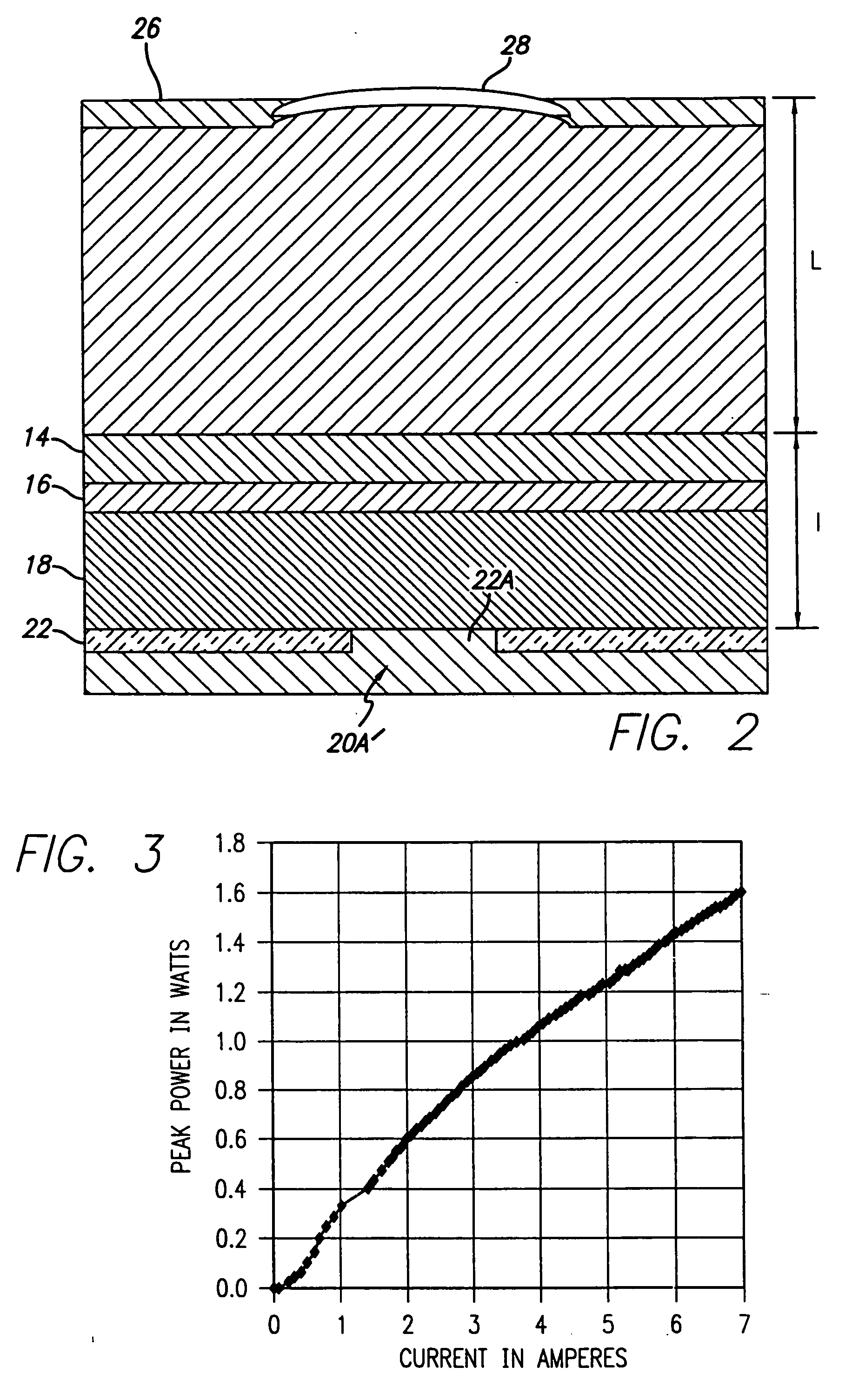Coupled cavity high power semiconductor laser
- Summary
- Abstract
- Description
- Claims
- Application Information
AI Technical Summary
Benefits of technology
Problems solved by technology
Method used
Image
Examples
Embodiment Construction
[0029] One preferred embodiment of a coupled cavity VECSEL 10 according to the present invention is shown schematically in FIG. 1. The coupled cavity VECSEL 10 includes an n-type semiconductor substrate 12. The substrate 12 should be sufficiently thick to be conveniently handled during manufacturing process and is sufficiently doped with n-type dopants to reduce the electrical resistance of substrate 12 to a value required for efficient operation and nearly uniform carrier injection across the current aperture region at high power levels (so that the active gain region is pumping uniformly without excessive carrier crowding), but without a corresponding sacrifice of the optical efficiency, as will be explained in detail in the following paragraphs. In an exemplary embodiment, the current aperture diameter is 100 μm and the doping level of the n-type dopants in the substrate is approximately between 1×10−17 cm−3 and 5×10−17 cm−3; the substrate is approximately 50 μm to 350 μm thick. ...
PUM
 Login to View More
Login to View More Abstract
Description
Claims
Application Information
 Login to View More
Login to View More - R&D
- Intellectual Property
- Life Sciences
- Materials
- Tech Scout
- Unparalleled Data Quality
- Higher Quality Content
- 60% Fewer Hallucinations
Browse by: Latest US Patents, China's latest patents, Technical Efficacy Thesaurus, Application Domain, Technology Topic, Popular Technical Reports.
© 2025 PatSnap. All rights reserved.Legal|Privacy policy|Modern Slavery Act Transparency Statement|Sitemap|About US| Contact US: help@patsnap.com



